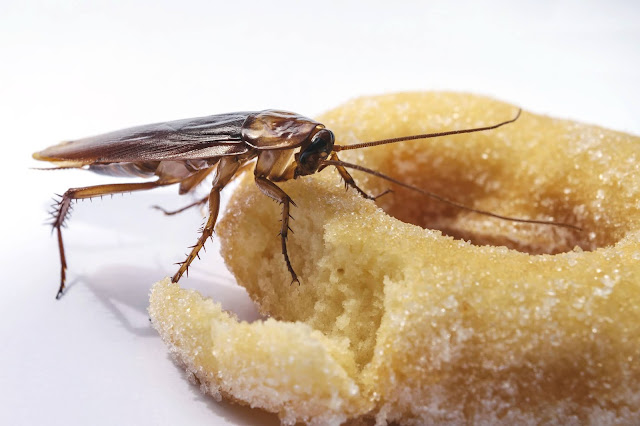COCKROACHES THAT LIVE INDOORS
www.redully.com
The German cockroach (see Table 1), Blattella germanica, is the most common indoor species in California (and perhaps worldwide), especially in multi-unit housing environments. They prefer food preparation areas, kitchens, and bathrooms, favoring warm (70° to 75°F), humid areas that are close to food, water, and dark areas for harborage. Severe infestations may spread to other parts of buildings.
Of all the cockroach species in California, the German cockroach is the most persistent and troublesome; it lives and breeds in indoor locations associated with food preparation and may pose health concerns due to contamination of food and production of indoor allergens. German cockroaches may become pests in homes, schools, restaurants, hospitals, warehouses, apartments, and in virtually any structure that has food preparation or storage areas. They contaminate food and eating utensils, destroy fabric and paper products, and impart stains and unpleasant odors to surfaces they contact.
German cockroaches are believed to be capable of transmitting numerous disease-causing organisms such as Staphylococcus spp., Streptococcus spp., hepatitis virus, and coliform bacteria. They have also been implicated in the spread of typhoid and dysentery.
The female carries around a light beige egg case, about 1/4 inch long, until 1 to 2 days before it hatches, when she drops it. Sometimes the egg case hatches while it is still being carried by the female. Each egg case contains about 30 young, and a female may produce a new egg case every few weeks. This species has the fastest reproductive cycle of all the common pest cockroaches: a single female and her offspring can produce over 30,000 individuals in a year.
Brownbanded Cockroach
The brownbanded cockroach (see Table 1), Supella longipalpa, is not as common as the German cockroach in California and accounts for only about 1% of all indoor infestations. This species prefers temperatures of about 80°F, about 5° to 10°F warmer than that preferred by German cockroaches. Favored harborage locations include crevices within or near electrical appliances, behind artwork and decorations on walls, within hollow legs of furniture, and within accumulations of clutter. They are not usually associated with food preparation areas but may be found in offices, animal care facilities, kitchens, schools, laboratories, industrial facilities, and hospitals. Brownbanded cockroaches prefer starchy foods, such as the glue on stamps and envelopes.
Adult males sometimes fly when disturbed, especially at higher temperatures (above 85°F), but females cannot fly. Females glue light brown egg cases, which are about 1/4 inch long, to ceilings, beneath furniture, or in closets or other dark places where eggs incubate for several weeks before hatching. Multiple egg cases may be glued together in large deposits. Each female and her offspring are capable of producing over 600 cockroaches in one year.
| GERMAN COCKROACH Adult: 0.5 inch; light brown; 2 dark stripes on pronotum. | BROWNBANDED COCKROACH Adult: 0.5 inch; males are golden tan; females are darker brown; both have light-colored bands on abdomen, wings, and sides of pronotum. | ||



Comments
Post a Comment